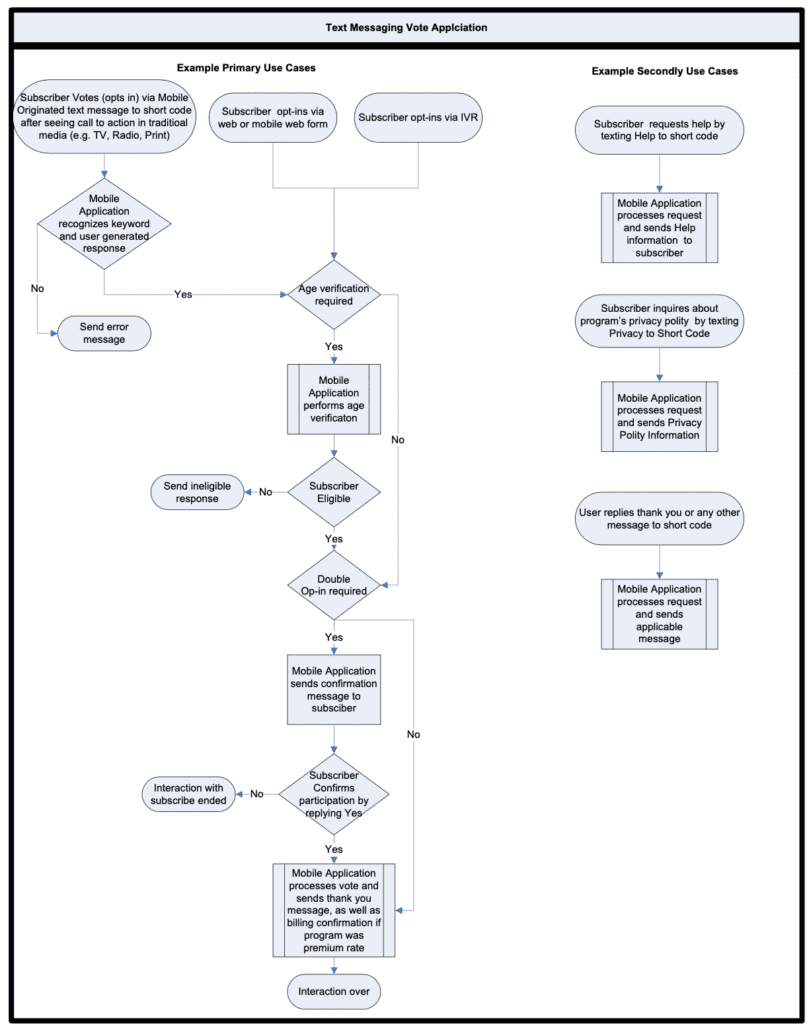In a very short period, the mobile phone has rapidly become an essential communication channel used daily by billions around the world and it is poised to become a dominant channel for marketing as well. The use of the mobile phone as a marketing channel has already developed into a multi-billion dollar industry, yet mobile marketing today is still in its infancy. There is still much that needs to be done to enhance mobile marketing services, including the refinement of the user experience. Designing effective mobile marketing campaigns requires a renewed focus on the customer experience. This academic review discusses how marketers, designers, and technologists can benefit from a decade of experience in web design for personal computers, as well as early signs of a new wave of ubiquitous computing in which mobile phones will play a key role.
The mobile phone is the most ubiquitous communication channel on the planet, far surpassing fixed line telephones and internet connections. According to Ahonen & Moore (2007) there are 1.3 billion landline phones, 1.5 billion television sets, 1.4 billion credit cards, 850 million PC users, 1.1 billion internet users,1.5 billion email boxes used by 800 million people, and a whopping 2.7 billion mobile subscribers, two thirds of which (1.8 billion) are active text messaging users. The mobile phone is used for voice communications, messaging, information gathering, entertainment, shopping, commerce, and enables a wide range of other services. Ensuring user interactions on the phone are secure and error-free are both required elements for the success of an individual marketer's campaigns. These elements are also required for the future success and emergence of the mobile phone as a marketing and advertising platform. A platform that one day will not just complete but change the nature of traditional media channels like television, radio, outdoor, web and print.
Pertinent Areas of Research
There is a large body of knowledge, from a number of different disciplines in the past decades which can be leveraged for the creation of useful, usable and desirable digital services. These fields of knowledge include human factors (Salvenry 2006), software and web usability (Braiterman 2000, Kuniavsky 2003), design anthropology (Holtzblatt and Beyer 1998, Ito 2005), cognitive psychology (Norman 1988), human-computer interaction (Shneiderman 1998, Dix et al 1998), interaction and persuasive design (Rosenfield & Morville 1998, Fogg 2002), and ubiquitous computing (Weiser and Brown 1995, Norman 1998, Greenfield 2006).
The cornerstone of digital design work can be found in the early work of man to machine interfaces for the workplace. Ergonomics, a synonym for human factors, literally means the “study of work.” Beginning during the Industrial Revolution and accelerating during World War II, human factors focused on complex machinery and specialized users, long before the web and software became widespread in the workplace in the 1980s and 1990s. Human factors in the 1940s and 1950s focused on airplane cockpits where operator error could lead to catastrophic accidents (Meister 1999). Human factors pioneered the study of “human technology” for well-trained operators and contributed to industrial design’s appreciation of human physical and mental limits.
The technology spread from specialized work to general work with the rise of software as a tool that all workers were expected to use. With the changing user group, the field of human factors became less focused on preventing disaster and more focused on increasing productivity and reducing training time and costs (Salvenry 2006). Technology, both machine and software, rapidly become an essential tool for all workers. Incentives for businesses to focus on the human side of office technology include the cost of training, manuals, and support services in the shift from analog to digital workplaces.
Learnings from these technology waves of human factors and usability research contributed to the development of spatial interfaces, cognitive models, information hierarchies, error prevention and new ways of measuring learning time and productivity.
Web 1.0 and Interactive Customer Experience
The rise of the internet as a mass phenomenon in the 1990s signaled a shift in technology from it primarily being used by workers in offices to also being used by consumers for entertainment, information gathering, and leisure activities. And the reverse is also occurring now, where consumer technologies, such as personal digital assistants, Instant Messaging and text messaging, are now being brought into the workplace by consumers and changing the way work is performed. Technology has left the exclusive halls of trained specialists and entered the realm of the general population, which is comprised of people of all ages, interests, and backgrounds. Unlike enterprise machinery and software, web use has been largely voluntary, with no opportunity or expectation for web businesses to proactively train novice users. Many web users learn and experience the technology on their own.

Lessons from web usability and customer experience include reducing barriers to entry, designing for intuitive and appealing interactions, clear and consistent navigation, ensuring that web commerce is trustworthy, and focusing on metrics such as traffic generation, conversions, and sales (Rosenfeld and Morville 1998, Kuniavsky 2003). Leading companies such as Amazon used qualitative and quantitative methods to examine the shopping experience and constantly iterate, improve, and personalize their services with the objective of improving sales and the bottom line. All these lessons are applicable to the mobile space.
Heuristic Guide for Mobile Marketing
The mobile phone is a new and unique medium. In addition to the far smaller screen size and processing power than a personal computer or television, mobile phones occupy a distinctly different place in consumers’ lives. One anthropologist describes the essential features of mobile phones as "personal, portable and every day" (Ito 2005). Unlike other media or computers, the mobile phone is within reach for a large portion of every day, regardless of time or place.
Given this unique nature, when it comes to consumer experience design for the mobile channel, the following are some customer experience heuristics that apply to mobile marketing and ones that marketers should consider when developing their programs:
- The customer is in control. Since all activity is voluntary, customer’s objectives, goals, and emotions must be taken into account from the call to action, to the interaction on the handset and the results of user action. Industry best practice and regulations require mobile marketing to follow strict opt-in policies.
- Keep it simple. The interaction must be straight-forward and simple; for instance, IDC notes that users only have an 8 to 10-second attention span with some mobile initiatives (IDC 2007). Moreover, a number of opt-in methods have been developed to streamline the interaction with mobile marketing initiatives, including short codes, IVR, QR Codes, the # method, as well as the ** method. A number of these various opt-in methods have been developed as a way to reduce the cognitive burden and ergonomic constraints of the ten-key pad. For instance, in Japan, QR codes make mobile content available with a single click of the camera phone. Multiple steps only increase drop-off rates.
- Have clear use cases and user flows developed. It is critical to consider all the use cases, i.e. methods of how and reasons why people will want to use your service. In addition, you should develop user flows for possible paths people may take while interacting with the service or marketing campaign. For instance, you must consider if the program is premium rate or standard rate (i.e. will the subscriber be charged for participation), which opt-in methods will be supported, is double opt-in required, how help requests and privacy inquires will be handled, in addition to the standard flow of your service, like a poll or vote. In the United States, in order to have your campaign approved by the mobile operators, you must submit detailed use cases and user flows along with your commercial services application request. See figure 1 (click HERE) for an example user flow of a basic poll program via text messaging.
- Make it persuasive. Since all activity is voluntary, make sure that the offer contains real value for the customer, whether it is downloading a favorite song, video or game, communicating with close friends or virtual communities, or accessing abundant computing from a mobile handset for local services, navigation or entertainment.
- Integrate into the users’ environment. It is not impossible to teach users about new interactions, but it is far easier to leverage existing practices and mental models. Most users will be using services designed by others during most of the day, so stick with conventions and standards when possible.
- Continually iterate the user experience. Use qualitative research and quantitative metrics to constantly improve interactions and results. Web usability claims that small samples of users can identify 80% of usability problems (Nielsen 2000). Traffic, drop-off, and conversion rates can be monitored to see how small changes have large impacts. Many mobile marketing technologies are well suited to help with meeting this goal since they can be used to adjust mobile marketing initiative interaction sequences in real-time.
Ubiquitous Computing is on the horizon
It is important that we grasp and learn from today’s mobile marketing since mobile marketing today is in its infancy and we can establish a solid foundation and best practices. We are not far off from the world being truly mobile in terms of complete mobile ubiquity, with many potential new services and complexities. Ubiquitous computing imagines a world in which computing will be truly mobile, abundant and everywhere, with sensors and displays embedded into everyday environments. Examples include RFID, open IP internet on mobile devices, biometric identification, smart furniture, EZ pass, and FeliCa cards, metered parking spaces with sensors. In this new world, the mobile phone is not merely a device for voice and text communication and the mobile web, but also for interacting with increasingly intelligent environments. Early proponents of ubiquitous computing at Xerox Palo Alto Research Center advocated what they termed “calm technology” to integrate augmented reality without creating information overload and constant disruptions (Weiser and Brown 1995).
Text messaging as asynchronous communication, and other mobile marketing models in use today gives an early indication of communication on the periphery of user attention. However, there is still much to learn. As the mobile phone becomes ever more capable, new modes of alerting, communicating and informing must also be developed and the user experience transformed beyond current input devices, output displays, and overall capabilities. Customer experience in mobile environments must be studied and refined to take full advantage of this very powerful medium.
References
Ahonen, Tomi, and Alan Moore 2007
Putting 2.7 Billion in Context: Mobile Phone Users. Electronic document. http://communities-dominate.blogs.com ... /01/putting_27_bill.html.
Braiterman, Jared et al. 2000. Designing with Users in Internet Time. interactions. Journal of the Association for Computing Machinery's Human Computer Interaction society.
Dix, Alan et al. 1998. Human-Computer Interaction. Prentice Hall.
Fogg, BJ. 2002. Persuasive Technology: Using Computers to Change What We Think and Do (Interactive Technologies). Morgan Kaufmann.
Greenfield, Adam. 2006. Everyware: The Dawning of Ubiquitous Computing. New Riders Publishing.
Holtzblatt, Karen and Hugh Beyer. 1998. Contextual Design: Defining Customer-Centered Systems. Morgan Kauffman.
IDC Says Don't Underestimate Full Potential of Mobile Marketing. Electronic document 2007
In: Fierce Mobile Content. http://www.fiercemobilecontent.com/node/2941.
Ito, Mimi et al. 2005. Personal, Portable, Pedestrian: Mobile Phones in Japanese Life. MIT Press.
Kuniavsky, Mike. 2003. Observing the User Experience: A Practitioner's Guide to User Research. Morgan Kaufmann.
Meister, David. 1999. The History of Human Factors and Ergonomics. Lawrence Erlbaum.
Nielsen, Jakob. 2000. Designing Web Usability. New Riders.
Norman, Donald. 1988. The Psychology of Everyday Things. Basic Books.
Norman, Donald. 1998. The Invisible Computer: Why Good Products Can Fail, the Personal Computer is So Complex, and Information Appliances are the Solution. MIT Press.
Rosenteld, Louis and Peter Morville. 1998. Information Architecture for the World Wide Web. O’Reilly.
Schneiderman, Ben. 1998. Designing the User Interface: Strategies for Effective Human-Computer Interaction. Addison Wesley.
Weiser, Mark and John Seely Brown, 1995. Designing Calm Technology. Xerox PARC December 21, 1995
Xerox Palo Alto Research Center website about Ubiquitous Computing http://sandbox.xerox.com/ubicomp/
Credits: Image by PublicDomainPictures from Pixabay

No Comments.